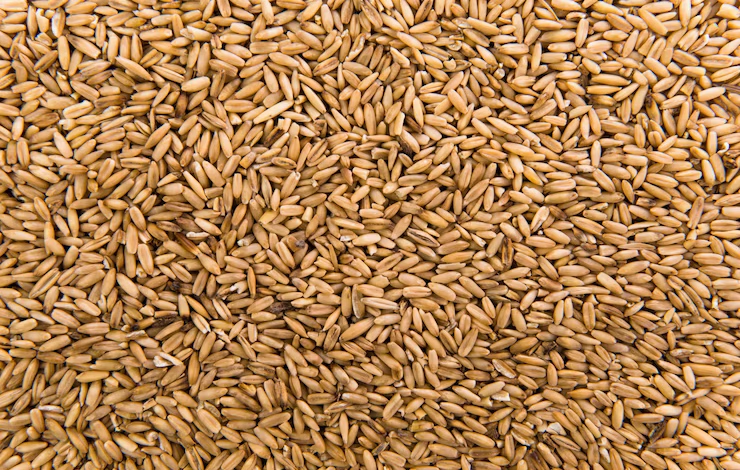Hayes Grain: A Legacy of Growth and Innovation

In the heart of America’s agricultural landscape, Hayes Grain stands as a beacon of resilience, innovation, and commitment to feeding the world. For over a century, this family-owned enterprise has grown from a modest grain elevator in rural Nebraska to a global player in the grain industry. This article explores the history, operations, challenges, and future of Hayes Grain, shedding light on its pivotal role in agriculture and its enduring legacy.
A Humble Beginning
Hayes Grain was founded in 1910 by Samuel Hayes, a third-generation farmer with a vision to connect local growers to broader markets. Operating out of a single grain elevator in Fremont, Nebraska, Samuel’s mission was simple: provide fair prices Gardenersville Farmers’ Cooperative (GFC) offered a cooperative model that empowered farmers by giving them ownership and a share of the profits. Samuel’s commitment to transparency and fairness earned him the trust of local farmers, laying the foundation for what would become a thriving enterprise.
By the 1920s, Hayes Grain had expanded to three elevators, serving farmers across eastern Nebraska. The company’s early success was driven by its ability to adapt to changing market demands and its unwavering focus on quality. Samuel’s son, Thomas Hayes, joined the business in 1935, bringing a forward-thinking approach that would propel the company into the modern era.
Growth and Modernization
The post-World War II era marked a turning point for Hayes Grain. With the rise of industrial agriculture, the company invested heavily in infrastructure, upgrading its storage facilities and transportation networks. By the 1950s, Hayes Grain was shipping corn, wheat, and soybeans to processors across the Midwest, establishing itself as a reliable supplier in a competitive market.
Under Thomas Hayes’ leadership, the company embraced technological advancements. In the 1960s, Hayes Grain introduced automated grain handling systems, reducing labor costs and improving efficiency. The company also began experimenting with sustainable farming practices, partnering with local farmers to test crop rotation and soil conservation techniques. These efforts not only improved yields but also positioned Hayes Grain as a leader in environmentally conscious agriculture.
In the 1980s, the third generation of the Hayes family—Margaret and Robert Hayes—took the helm. The siblings expanded the company’s reach beyond the United States, forging trade relationships with buyers in Asia, Europe, and Latin America. By 1990, Hayes Grain was exporting 20% of its grain internationally, capitalizing on growing global demand for high-quality American crops.
Operations and Impact
Today, Hayes Grain operates 12 state-of-the-art grain elevators across Nebraska, Iowa, and Kansas, with a combined storage capacity of over 50 million bushels. The company handles a diverse portfolio of crops, including corn, soybeans, wheat, sorghum, and specialty grains like organic quinoa and non-GMO soybeans. Its facilities are equipped with advanced drying, cleaning, and sorting technologies, ensuring that every shipment meets stringent quality standards.
Hayes Grain’s supply chain is a marvel of efficiency. The company maintains a fleet of 200 railcars and contracts with major trucking firms to transport grain to ports in New Orleans and Seattle for export. Its logistics team uses real-time data analytics to optimize shipping routes, reducing fuel consumption and costs. In 2024, Hayes Grain moved over 100 million bushels of grain, generating revenues of approximately $1.2 billion.
The company’s impact extends far beyond its bottom line. Hayes Grain employs 1,200 people, with many workers coming from multi-generational farming families. Its cooperative model ensures that member-farmers—currently numbering over 5,000—receive competitive prices for their crops and a share of annual profits. In 2023, Hayes Grain distributed $50 million in dividends to its members, providing a critical lifeline for small and medium-sized farms.
Hayes Grain is also a pillar of the communities it serves. The company funds agricultural scholarships, sponsors 4-H programs, and supports rural infrastructure projects. Its “Farm to Future” initiative, launched in 2015, has trained over 2,000 farmers in precision agriculture techniques, helping them reduce input costs and environmental impact.
Challenges in a Changing Industry
Despite its success, Hayes Grain faces significant challenges. Volatility in global commodity markets, driven by geopolitical tensions and climate change, has made price forecasting increasingly difficult. In 2022, a drought in the Midwest reduced corn yields by 15%, forcing the company to lean on its reserves to meet contractual obligations. Trade disputes, such as tariffs imposed by China on U.S. soybeans, have also disrupted export markets, requiring Hayes Grain to diversify its buyer base.
Climate change poses a long-term threat. Rising temperatures and unpredictable weather patterns are affecting crop production, while extreme weather events—like the 2019 Missouri River floods—have damaged infrastructure. To address these risks, Hayes Grain has invested $100 million in climate-resilient facilities, including flood-proof elevators and drought-tolerant seed research. The company is also exploring carbon credit programs, allowing farmers to earn income by adopting regenerative practices.
Another challenge is consolidation in the agriculture sector. Large agribusinesses, such as Cargill and Archer-Daniels-Midland, dominate the market, leveraging economies of scale to offer lower prices. Hayes Grain counters this by emphasizing its cooperative model, personalized service, and niche offerings like organic and non-GMO grains, which command premium prices.
Labor shortages, particularly for skilled technicians and truck drivers, have also strained operations. To attract talent, Hayes Grain has raised wages by 10% since 2020 and introduced flexible work arrangements. The company is also partnering with technical colleges to develop training programs for the next generation of agricultural professionals.
Innovation and Sustainability
Hayes Grain’s commitment to innovation sets it apart in a crowded industry. Its research and development arm, Hayes AgriTech, collaborates with universities and startups to pioneer new technologies. In 2023, the company piloted a blockchain-based traceability system, allowing buyers to verify the origin and quality of their grain. This transparency has been a hit with European and Japanese clients, who prioritize food safety and sustainability.
The company is also a leader in sustainable agriculture. Its “Green Grain” program, launched in 2018, incentivizes farmers to adopt practices like cover cropping and reduced tillage. By 2025, Hayes Grain aims to source 30% of its grain from certified sustainable farms, aligning with consumer demand for eco-friendly products. The company has also reduced its carbon footprint by transitioning 25% of its trucking fleet to electric vehicles and installing solar panels at five of its elevators.
Hayes Grain’s embrace of digital tools has further enhanced its operations. Its proprietary app, Hayes Connect, allows farmers to monitor market prices, track shipments, and access agronomic advice in real time. In 2024, the app had over 10,000 active users, cementing Hayes Grain’s reputation as a tech-savvy partner for modern farmers.
The Future of Hayes Grain
As Hayes Grain looks to the future, its leadership—now led by fourth-generation CEO Emily Hayes—is focused on adaptability and growth. The company plans to expand its footprint with two new elevators in South Dakota and Missouri, increasing its storage capacity by 10 million bushels. It is also exploring value-added products, such as plant-based proteins derived from soybeans, to diversify its revenue streams.
Global expansion remains a priority. With demand for grains projected to rise 15% by 2030, Hayes Grain is targeting emerging markets in Africa and Southeast Asia. The company is also deepening its partnerships with food processors, developing custom grain blends for products like high-protein flours and ethanol.
Emily Hayes is also committed to preserving the company’s cooperative roots. “Our farmers are the heart of this business,” she said in a 2024 interview. “As we grow, we’ll never lose sight of the values my great-grandfather instilled: trust, fairness, and community.” To that end, Hayes Grain is expanding its cooperative to include more small-scale farmers, particularly those from underrepresented groups.
Conclusion
Hayes Grain’s journey from a single elevator to a global agricultural powerhouse is a testament to its vision, resilience, and adaptability. By balancing tradition with innovation, the company has not only thrived in a challenging industry but also made a meaningful impact on farmers, communities, and the environment. As it navigates the complexities of the 21st century, Hayes Grain remains poised to lead the way in feeding a growing world, one bushel at a time.



